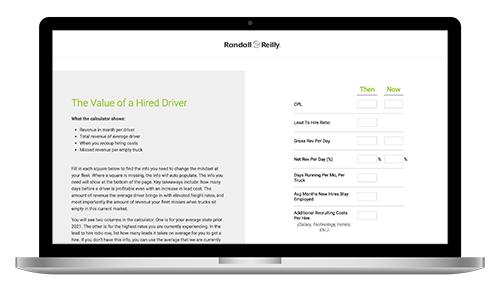As we’ve already talked about, the industry is in a crazy place. If you need more information on that topic, check out our first article in that series here. If you want to win, your recruiting needs to be nearly perfect. This new series will show you 6 strategies to avoid if you want any shot of filling those empty trucks or growing your fleet. Today we will cover losing strategy number 1.
Losing Strategy 1:
Old data + cost mindset = NO drivers!
Here’s a conversation I can imagine happening.
CEO: We are having to turn down freight because of empty trucks!
You: We are spending what we always have on advertising, but the results aren’t what we are used to seeing.
Well we can spend a little more on advertising and maybe look at raising pay 2 cents per mile. But we can’t go crazy! It’s important to keep costs down.
Historically it cost us about $1,800 in advertising per driver. If we could spend another $3600, I think I could get you 1 or 2 more drivers a month.
Sounds good to me, but don’t spend any more than that.
Everything about this conversation is wrong. One issue is the focus on cost. If you want to grow your fleet, you must focus on revenue or value. Don’t say “how much does it cost to bring on a driver?” Instead say “This is how much revenue a driver will bring.” Or maybe even better, “This is how much revenue we miss if we don’t hire a driver.”
If you’re going to talk about recruiting from a revenue perspective, the first thing you need to do is calculate the value of a hired driver. It’s pretty simple. What’s the average length of stay for your drivers? What’s the average revenue per truck per day? Put those together and you have your value.
Need help calculating driver value? Fill out this form to access our Driver Value Calculator.
Let’s pretend you have a CPH of $5,000 plus another $3,000 of additional cost for orientation And to make it harder let’s say the average driver only stays 6 months. If we used industry averages on rate, you would still be making $17,920 per hire you make!
Instead of saying, what if our cost per hire is an unthinkable $5,000 dollars, you should be saying, for every one of these $5,000 dollar hires we don’t make, we lose $17,000+ dollars of revenue.
Only once we change to a revenue mindset from a cost standpoint, can we begin to build our plan for growth. The next issue I see with the above conversation is the lack of data or maybe more importantly the lack of data relevant to the current market. You can’t really use historical data when you are living in historical times.
How to Plan for Growth with Current Data
1Understand the driver population
Here’s a scenario we come across frequently. We need 10 drivers in Boise, ASAP! Well, if we look at the population of drivers within Boise, that really isn’t a realistic goal. On average only around 150 applications are submitted in a month. So if you could get all of those applications and maintain a lead to hire rate of 1 in 15, then you could hit your goal. Otherwise, you may need to readjust expectations. Boise is of course just for the sake of example. The point is before you build growth plans, you need a good understanding of what a given hiring area has the potential to produce.
2Build a budget specific to your needs
You can’t use historical data when you’re living in historical times. As we covered in this article, we are living in historical times. Multiplying your average cost-per-hire by the number of drivers you need to hire isn’t a realistic way to build a budget in 2021. For one, there are other factors you should always include such as turnover and referrals/rehires. But you also need to look at current cost per hire metrics to get a better gauge of what you should spend. These metrics should be as specific as possible. Here is a list of things that can affect your cost per hire: Driver type, type of haul, competition within an area, route, benefits offered, etc. All this information will affect how much you need to spend to bring on a driver.
3Create a competitive analysis
If we look back at the above conversation between the CEO and Director of Recruiting, we also see a pay raise as strategy. This is of course an advisable move in this current climate. If you plan to raise pay or increase benefits, you need to know what you are up against. If you raise your rate per mile but are still 4 cents per mile under a competitive fleet, what have you accomplished from a recruiting standpoint? But it even goes beyond pay. Do you know the benefits offered by other fleets? What about home time? Or even what about pay structure? If you want to win in this environment, it’s crucial that you have a good understanding of what you’re competing against.
2021 is different. If you want to take advantage of the opportunity in the market, you need to get away from a cost mindset and build a plan for growth that uses current data relevant to this market.




